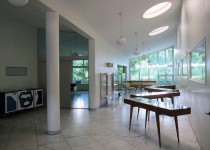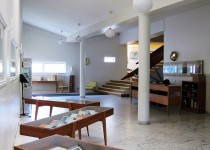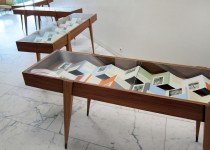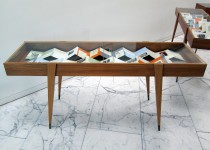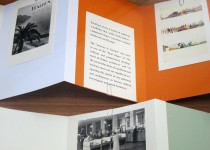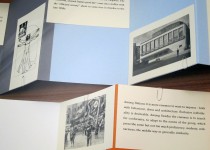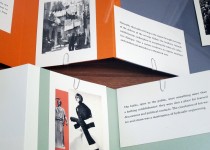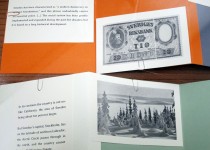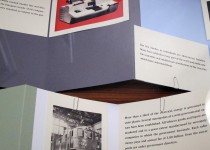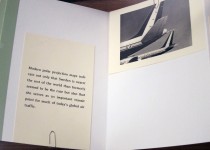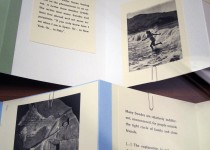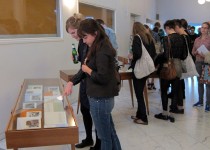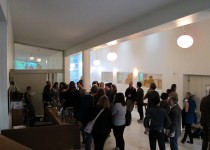Printed work: In the Near Past, 2012
2012, installation of prints placed in four cabinets
8 leporellos of colored paper, each 170 x 19 cm
102 attached prints with quotes (60) and images (42), each 9 x 13 cm
The site-specific piece In the near past has been developed for the exhibition Volumi Contrastanti / Kontrasterande Volymer, which took place at the Italian Cultural Institute in Stockholm August/September 2012. The exhibition was a collaboration between the Italian, Swedish and Finnish artists Maria Andersson, Marco di Guiseppe, Karin Lindh, Elena Mazzi, Malin Pettersson Öberg and Hans Rosenström, and the curators Rosario Sorbello and Elina Suoyrjö.
« In her installation In the Near Past Malin Pettersson Öberg has explored and cited texts from the Italian Cultural Institute’s library, many of which were written around the time of the institute’s inauguration. They illuminate and illustrate the relationship between Sweden and Italy in various ways: by describing Swedish and Italian mentalities, national and cultural characteristics as well as geographical territories. If a book’s main characteristic resides in its ability to present and fix a thought, putting it in “black on white”, Pettersson Öberg unhinges the power of a narrative structure that implies the drafting of any type of written, literary, poetic, visual or essay piece. The quotes that the artist presents are anonymous and fragmentary: “un-personalized” points of view. The quotes are deprived of an author and of precise cultural and historical references. The impossibility of identifying the contexts and sources of the quotes refrains the viewer from leaning on their own possible pre-judgments. Pettersson Öberg’s work gives the viewer the possibility to think freely about the specific contexts and interpretations suggested by the texts, images and aesthetics of the piece. The work strives towards a new narration, while at the same time avoids giving it a new structure. Instead of offering a set standpoint for the viewer, the artist provides material from which one can build one’s own vision. The texts’ quotes float together inside the wooden vitrines, to be interpreted differently by each visitor. When the Italian Cultural Institute was inaugurated in Stockholm, the reactions of the Swedish press were ambiguous towards Giò Ponti’s architecture. According to some writers, the mixed reactions can be explained via the cultural differences between the two nations. Pettersson Öberg’s installation suggests a rethinking of dated visions concerning cultural identities and differences. Pettersson Öberg’s work crosses the site-specific borders of the institute and moves toward the universal. What exactly do cultural and national identities currently mean? On what terms and with what kind of social consequences is the current globalization process transforming the concept of cultural identity? »
Text by Elina Suoyrjö and Rosario Sorbello
Download the text as pdf
